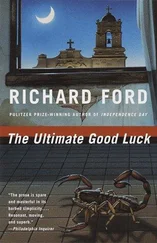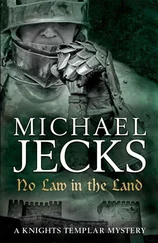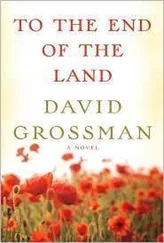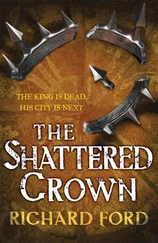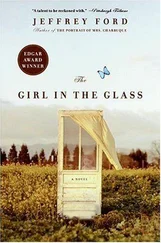The Haddam cemetery — which I intend to avoid — lies directly behind where I once resided at 19 Hoving Road, and is the resting place of my aforementioned son Ralph, who died of Reye’s at age nine and would be almost thirty now. He “rests” there behind the wrought-iron fence among the damp oaks and ginkgoes, alongside three signers of the Declaration, two innovators of manned flight and innumerable New Jersey governors. I don’t go there anymore, as the saying has it. I’ve learned by trial and much error to accept that Ralph is not coming back to his mother and me. Though every time I venture near the cemetery, I dreamily imagine he still might — which I deem to be a not-good thought pattern, and to violate the Permanent Period’s rule of the road about the past. Mike has told me the Dalai Lama contends that young people who die are our masters who teach us impermanence, and I’ve tried to think of things this way.
In truth, it’s no longer even physically possible to cruise past my old Hoving Road house — a sweet, sagging, old Tudor half-timber on a well-treed lot, which I sold to the Theological Institute in the eighties, and who then transformed it into an ecumenical victims’ rights center. (Land-mine victims, children-soldier victims, African-circumcision victims, families of strangled cheerleaders, all became regular sights on the sidewalkless street.) However, due to fierce nineties property-value wars, my former residence was demo’d the instant the Korean Fresh Lighters took over, and the ground sold for a fortune. Efforts were made to recycle the old pile using chain saws and flatbed trucks. Some ecumenicists wanted it hauled to Hightstown and rechartered as a hospice, whereas others wanted it moved to Washington’s Crossing and turned into an organic restaurant. For a week, the neighborhood association, fearing the worst, stood a vigil and actually erected a human chain against the recycling people. But without notice, one night the Koreans dispatched a jumpsuited wrecking crew, trucked in dismantling equipment, trained two big klieg lights on the house, lighting up the neighborhood like an invasion from space. And by seven in the morning all four walls — within which I’d started a family, experienced joy, suffered great sadness, became lost to dreaminess, but through it all slept many nights as peaceful as a saint under the sheltering beeches and basswoods — were gone.
Legal remedies were sought — to enjoin something, punish someone. The neighborhood has many lawyers. But the Koreans instantly cashed in the lot for two million to a thoroughbred breeder from Kentucky with big GOP connections. In a year, he’d put up a lot-line to lot-line three-quarter-size replica of his white plantation-style mansion in Lexington, complete with fluted acacia-leaf columns, mature live oaks from Florida, an electric fence, mean guard dogs, a rebel flag on the flagpole and two Negro jockey statues painted his stable colors, green and black. “Not Furlong” is what he called the place, though the neighbors have found other names for it. All problems were deemed my fault for selling out originally back in ’85. So mine is not a popular face around there now, though many of my old neighbors have also moved on.
B runswick Pike glides me in through Rocky Ridge, back into Haddam Township, and becomes Seminary Street along the banks of the widened stream referred to by locals as Lake Bimble, for the German farmer who owned the river bank and, as a Tory in the Revolution, gave aid and comfort to Colonel Mawhood’s troops, and who for his trouble got bound to a sack of ballast rocks and tossed in the stream — Quaker Creek — by General Washington’s men, there to stay.
Since I lived here for twenty years, I know what to expect farther in on Seminary two days before Thanksgiving. A melee. People stocking up and leaving for Vermont and Maine, the cozy Thanksgiving states; others arriving for family at-homes, students back from Boulder and Reed, divorcées visiting children, children visiting divorcées — the customary mid-day automotive hector brought about by a town become a kind of love-it/hate-it paragon of suburban amplitude gone beyond self-congratulation to the point of entropy. (Greenwich minus the beach, times three.)
Plus, there’s the further complication of the town fathers’ decision to mount a Battle of Haddam re-enactment right in town. I read this in the Haddam Packet, which I still receive in Sea-Clift. Uniformed Redcoats and tattered Continentals in homespun, carrying period musketry, eating homemade hardtack and wearing tricorn hats, jerkins and knee pants, their hair in pigtails, will be setting up drill fields, redoubts and headquarters all around the Boro, staging assaults and retreats, bivouacs and drumhead courts-martial, digging latrines and erecting tenting at the sites where these occurrences actually occurred back in 1780—though the current sites may now be Frenchy’s Gulf, Benetton or Hulbert’s Classic Shoes. This was done once before, for the bicentennial, and it’s all happening again for the Millennium in an effort to rev up sidewalk appeal. Though some merchants — I heard this at the bank last week — are already sensing retail disaster, and have retained counsel and are computing lost revenue as damages. This includes the bank itself.
The other distraction making movement into the Square near-impossible is that the Historical Society, in a fit of Thanksgiving spirit and under the rubric of “Sharing Our Village Past,” has converted the entire Square in front of the August Inn and the Post Office into a Pilgrim Village Interpretive Center. Two Am. Civ. professors from Trenton State with time on their hands have constructed a replica Pilgrim town with three windowless, dirt-floor Pilgrim houses, trucked-in period barnyard animals, and lots of authentic but unhandy Pilgrim implements, built a hand-adzed paled fence, laid in a subsistence garden and produced old-timey clothes and authentically inadequate footwear for the Pilgrims themselves. Inside the village they’ve installed a collection of young Pilgrims — a Negro Pilgrim, a Jewish female Pilgrim, a wheelchair-bound Pilgrim, a Japanese Pilgrim with a learning disability, plus two or three ordinary white kids — all of whom spend their days doing toilsome Pilgrim chores in drab, ill-fitting garments, chattering to themselves about rock videos while they hew logs, boil clothes, rip up sod, make soap in iron caldrons and spin more coarse cloth, but now and then pausing to step forth, just like soap-opera characters on Christmas Day, to deliver loud declarations about “the first hard days of 1620” and how it’s impossible to imagine the character and dedication of the first people and how our American stock was cured by tough times, blab, blab, blab, blab — all this to whoever might be idle enough to stop on the way to the liquor store to listen. Every night the young Pilgrims disappear to a motel out on Route 1, fill their bellies with pizza and smoke dope till their heads explode, and who’d blame them?
Merchants on the Square — the Old Irishman’s Kilt, Rizzutto’s Spirits, Sherm’s Tobacconist — have taken a more tolerant view of the Pilgrim shenanigans than they have of the battle re-enactors, who whoop and carry weapons, and stay out at the actual battlefield in Winnebagos and bring their own food and beer and never buy anything in town. The Pilgrims, on the other hand — which is probably how they were always viewed — are seen as a kind of peculiar but potentially attractive business nuisance. It’s hoped that passing citizens who pause to hear the overweight paraplegic girl give her canned speech about piss-poor medical facilities in seventeenth-century New Jersey, and how someone in her state of body wouldn’t have lasted a weekend, will then be moved by an urge to buy a Donegal plaid vest or a box of toffees or Macanudos or half a case of Johnnie Walker Red.
Читать дальше

